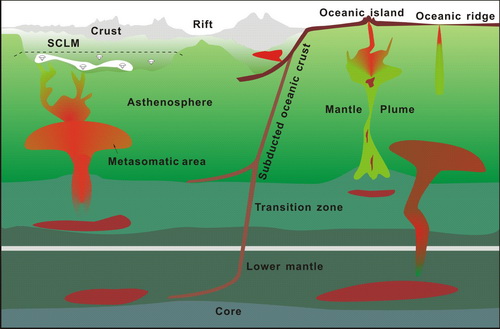Master student ZHANG Pengfei and his teacher TANG Yanjie review results from some of the recent experiments on the partial melting of eclogite and peridotite and show that melting of carbonated eclogite and peridotite can produce carbonatitic to carbonated silicate melt, in which carbonates melt preferentially before Ti oxides and silicates. Low-degree melting results in carbonatitic melt coexisting with Ti oxided and silicates. This process also leads to the fractionation between some high-field strength elements (Nb, Ta, Zr, and HREE) and highly incompatible elements (U and Th) in the melt.
These results help to explain the features of carbonatitic metasomatism and the Nb–Ta spike in oceanic island basalts as identified in experimental studies. These studies also explain the reducing conditions that stabilize diamond in the deep mantle (>150 km) as well as the occurrence of diamond at different depths reported in various studies. A combination of these processes generates locally oxidized domains in the deep mantle.

Figure 1. Distribution diagram of redox states in the mantle. (Image by ZHANG)
Zhang et al. Review of melting experiments on carbonated eclogite and peridotite: insights into mantle metasomatism.International Geology Review. 2012, 54(12): 1443-1455 (Download Here)